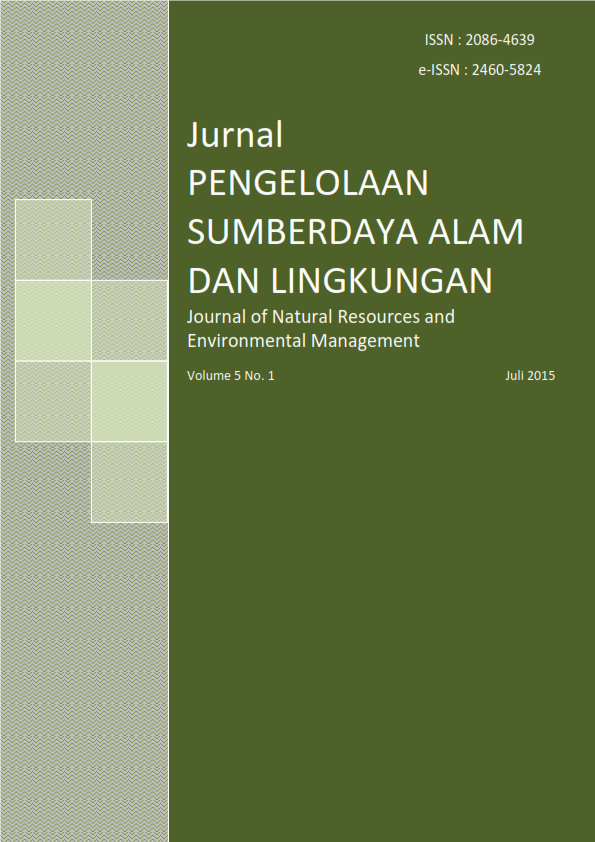KAJIAN BEBAN PENCEMARAN LIMBAH CAIR INDUSTRI KECIL MENENGAH (IKM) BATIK KLASTER TRUSMI KABUPATEN CIREBON
Abstract
Growing number of Indonesian Batik SMEs has been started since UNESCO announced batik as world heritage from Indonesia in 2009. However, this condition also brings negative impact related to water pollution. Huge variety of dyestuff always has been a challenge in estimating total pollution load from this sector. This study aim to estimate pollution load of some key parameters (BOD5, COD and TSS) of wastewater generated by Batik SMEs in Trusmi cluster. By calculating pollution load factor per unit product (PLU) trough analyzing waste water quality and quantity in every step of batik making process and considering type of fabric (cotton and silk) and type of dyestuff (Naphtol and Indigosol) as variable, it can be concluded that the PLU factor for BOD5 and TSS is associated to the type of fabric, meanwhile COD parameter is associated to the type of dyes. By multiplying the PLU factor with total production capacity from all SMEs in Trusmi cluster, it can be estimated that the total pollution load range in Trusmi area for BOD is at 5,9 – 39,5 ton/year; COD at 112-426 ton/year; and TSS at 4,88-16,3 ton/year.
Keywords: batik, SMEs cluster, pollution load factor, waste water
Authors
Authors who publish with this journal agree to the following terms:
- Authors retain copyright and grant the journal right of first publication with the work simultaneously licensed under a Creative Commons Attribution License that allows others to share the work with an acknowledgement of the work's authorship and initial publication in this journal.
- Authors are able to enter into separate, additional contractual arrangements for the non-exclusive distribution of the journal's published version of the work (e.g., post it to an institutional repository or publish it in a book), with an acknowledgement of its initial publication in this journal.
- Authors are permitted and encouraged to post their work online (e.g., in institutional repositories or on their website) prior to and during the submission process, as it can lead to productive exchanges, as well as earlier and greater citation of published work (See The Effect of Open Access).






